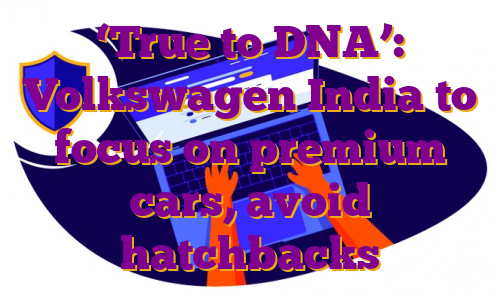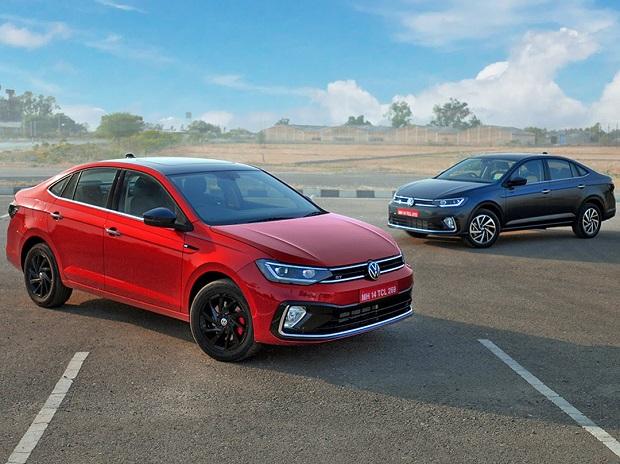Germany’s Volkswagen has said that in India it will focus on the premium sedan and SUV segment and avoid the mass hatchback segment.
“Customers don’t expect anything less than a premium product from Volkswagen. Customers expect a certain quality level, a certain driving dynamics from a Volkswagen and we have to stay true to that DNA. The day I tried to be mass, customers will start rejecting me,” said Ashish Gupta, brand director, Volkswagen India, in an interview to Business Standard.
Volkswagen’s decision to avoid the hatchback segment, where Indian automakers sell their highest number of products, is also driven by taxation structure.
Cars shorter than four metres in length and with engines under 1200 cc in petrol and 1500 cc in diesel are categorised as small passenger vehicle. They enjoy 28 percent GST. Vehicles above these criteria are taxed higher.
“In the long run, it has to be about business economics, you can only have a sustainable future if you are profitable, and for financing the future investments,” Gupta said.
Volkswagen is betting on the sedan segment for growth. Its latest product for India, the Virtus, is a premium mid-sized sedan. Gupta expects the Virtus and group company Skoda’s Slavia car to expand the sedan market to 140,000-150,000 units this year.
This is in contrast to the current market dynamics where carmakers are responding more to the growing love for SUVs in customers.
“No doubt, the SUV body style has been becoming popular globally, but if you look at what cost, it is actually the hatchbacks at whose cost the growth in SUVs has come,” Gupta said.
He noted that at the same period, say for the last three years, the sedan body style has stayed more or less constant at around 11 to 12 percent of the market.
“Everybody is focusing so much on SUVs, that the sedan body style has been basically ignored. That is where I see a big opportunity for a product with the right package with a European lineage actually making a difference in that segment.”
The Volkswagen Virtus is the second product under the India 2.0 project that is developed on the MQB A0 IN platform with up to 95 percent localisation levels.
In February, the company registered a growth of 84 per cent YoY growth in sales primarily driving on the Taigun- which it launched last year.
In late 2019, it announced a massive structural and operational overhaul worth €1 billion, one of the biggest investments in the Indian auto sector.
The group merged its three units—Volkswagen India, Volkswagen Group Sales India and Škoda Auto India—into one entity called Škoda Auto Volkswagen India to streamline decision-making.
Volkswagen is also trying to bring down the cost of ownership of its vehicles. “When we localize, that automatically brings down the cost,” says Gupta.
 Dear Reader,
Dear Reader,
Business Standard has always strived hard to provide up-to-date information and commentary on developments that are of interest to you and have wider political and economic implications for the country and the world. Your encouragement and constant feedback on how to improve our offering have only made our resolve and commitment to these ideals stronger. Even during these difficult times arising out of Covid-19, we continue to remain committed to keeping you informed and updated with credible news, authoritative views and incisive commentary on topical issues of relevance.
We, however, have a request.
As we battle the economic impact of the pandemic, we need your support even more, so that we can continue to offer you more quality content. Our subscription model has seen an encouraging response from many of you, who have subscribed to our online content. More subscription to our online content can only help us achieve the goals of offering you even better and more relevant content. We believe in free, fair and credible journalism. Your support through more subscriptions can help us practise the journalism to which we are committed.
Support quality journalism and subscribe to Business Standard.
Digital Editor
!function(f,b,e,v,n,t,s){if(f.fbq)return;n=f.fbq=function(){n.callMethod?n.callMethod.apply(n,arguments):n.queue.push(arguments)};if(!f._fbq)f._fbq=n;n.push=n;n.loaded=!0;n.version=’2.0′;n.queue=[];t=b.createElement(e);t.async=!0;t.src=v;s=b.getElementsByTagName(e)[0];s.parentNode.insertBefore(t,s)}(window,document,’script’,’https://connect.facebook.net/en_US/fbevents.js’);fbq(‘init’,’550264998751686′);fbq(‘track’,’PageView’); .


